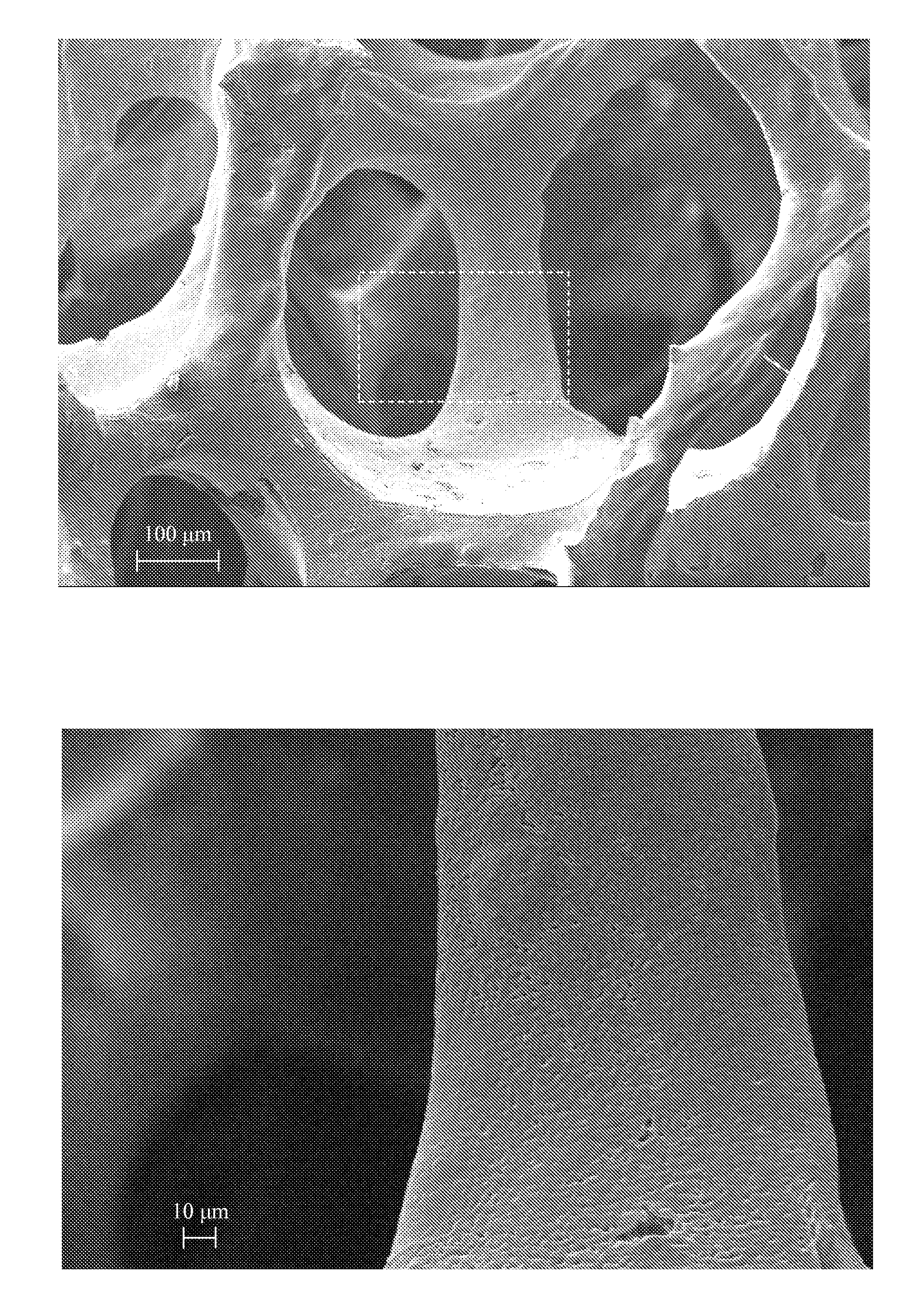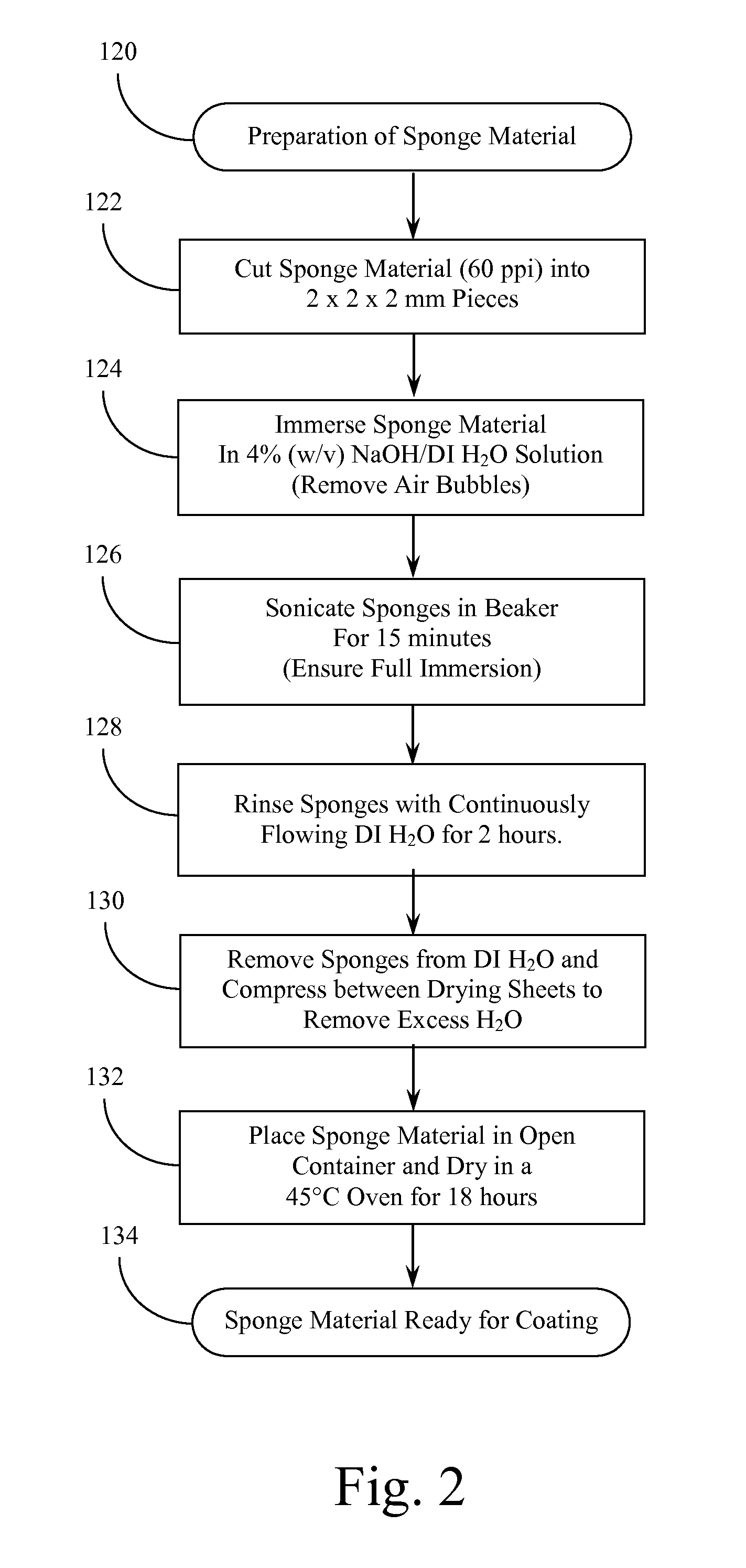Porous Ceramic Foam Granules and Method of Producing the Same
a technology of porous ceramic foam and granules, which is applied in the field of materials, can solve the problems of reducing the strength of materials, identifying no single material or fabrication technique optimal for bone tissue regeneration, and unable to meet the requirements of bone tissue regeneration, so as to improve the mechanical integrity of granules
- Summary
- Abstract
- Description
- Claims
- Application Information
AI Technical Summary
Benefits of technology
Problems solved by technology
Method used
Image
Examples
Embodiment Construction
[0025]Reference is made first to FIG. 1 for a description of the overall manufacturing process for producing the porous sintered ceramic material of the present invention. FIG. 1 provides an overview of the major sub-processes utilized in conjunction with the manufacturing method of the present invention. FIGS. 2-7 thereafter describe in more detail the individual steps associated with carrying out each of the sub-processes within the overall method of the present invention.
[0026]As FIG. 1 discloses, the process of porous sintered ceramic material construction is initiated at Step 100. A first process Step 102 involves the preparation of the foam material to be utilized in the porous sintered ceramic material construction. Step 104 involves the sub-process of preparing a first slurry for use in the coating process. The first coating process is carried out at sub-process Step 106. A first sintering process is carried out at sub-process Step 108.
[0027]As the overall construction proce...
PUM
| Property | Measurement | Unit |
|---|---|---|
| Temperature | aaaaa | aaaaa |
| Temperature | aaaaa | aaaaa |
| Size | aaaaa | aaaaa |
Abstract
Description
Claims
Application Information
 Login to View More
Login to View More - R&D
- Intellectual Property
- Life Sciences
- Materials
- Tech Scout
- Unparalleled Data Quality
- Higher Quality Content
- 60% Fewer Hallucinations
Browse by: Latest US Patents, China's latest patents, Technical Efficacy Thesaurus, Application Domain, Technology Topic, Popular Technical Reports.
© 2025 PatSnap. All rights reserved.Legal|Privacy policy|Modern Slavery Act Transparency Statement|Sitemap|About US| Contact US: help@patsnap.com



